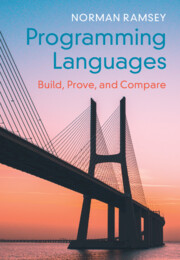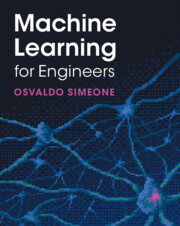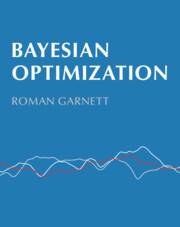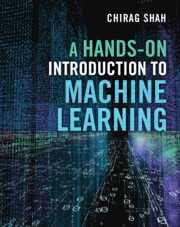Refine search
Actions for selected content:
48202 results in Computer Science

Programming Languages
- Build, Prove, and Compare
-
- Published online:
- 27 January 2023
- Print publication:
- 27 October 2022
-
- Textbook
- Export citation
The Archimedes Code: a dialogue between science, practice, design theory and systems engineering
-
- Journal:
- Design Science / Volume 9 / 2023
- Published online by Cambridge University Press:
- 27 January 2023, e2
-
- Article
-
- You have access
- Open access
- HTML
- Export citation
Multiple-drawing dynamic Friedman urns with opposite-reinforcement
- Part of
-
- Journal:
- Probability in the Engineering and Informational Sciences / Volume 38 / Issue 1 / January 2024
- Published online by Cambridge University Press:
- 26 January 2023, pp. 115-129
-
- Article
-
- You have access
- Open access
- HTML
- Export citation
Answer-Set Programming for Lexicographical Makespan Optimisation in Parallel Machine Scheduling
-
- Journal:
- Theory and Practice of Logic Programming / Volume 23 / Issue 6 / November 2023
- Published online by Cambridge University Press:
- 26 January 2023, pp. 1281-1306
-
- Article
-
- You have access
- Open access
- HTML
- Export citation

Machine Learning for Engineers
-
- Published online:
- 25 January 2023
- Print publication:
- 03 November 2022
-
- Textbook
- Export citation

Bayesian Optimization
-
- Published online:
- 25 January 2023
- Print publication:
- 09 February 2023
Mean flow reconstruction of unsteady flows using physics-informed neural networks
-
- Journal:
- Data-Centric Engineering / Volume 4 / 2023
- Published online by Cambridge University Press:
- 25 January 2023, e4
-
- Article
-
- You have access
- Open access
- HTML
- Export citation
A simplest mathematics of turn-taking: Conversational deep structure, emergence, and permeation
-
- Journal:
- Network Science / Volume 11 / Issue 2 / June 2023
- Published online by Cambridge University Press:
- 25 January 2023, pp. 224-248
-
- Article
-
- You have access
- Open access
- HTML
- Export citation
Effects of haptic imagery on purchase intention
-
- Journal:
- Experimental Results / Volume 4 / 2023
- Published online by Cambridge University Press:
- 25 January 2023, e4
-
- Article
-
- You have access
- Open access
- HTML
- Export citation
Weighted synchronous automata
-
- Journal:
- Mathematical Structures in Computer Science / Volume 32 / Issue 9 / October 2022
- Published online by Cambridge University Press:
- 25 January 2023, pp. 1234-1253
-
- Article
- Export citation
Is sized typing for Coq practical?
-
- Journal:
- Journal of Functional Programming / Volume 33 / 2023
- Published online by Cambridge University Press:
- 24 January 2023, e1
-
- Article
-
- You have access
- Open access
- HTML
- Export citation
Preferential attachment hypergraph with high modularity
-
- Journal:
- Network Science / Volume 10 / Issue 4 / December 2022
- Published online by Cambridge University Press:
- 23 January 2023, pp. 400-429
-
- Article
-
- You have access
- Open access
- HTML
- Export citation
NWS volume 10 issue 4 Cover and Front matter
-
- Journal:
- Network Science / Volume 10 / Issue 4 / December 2022
- Published online by Cambridge University Press:
- 23 January 2023, pp. f1-f3
-
- Article
-
- You have access
- Export citation

A Hands-On Introduction to Machine Learning
-
- Published online:
- 20 January 2023
- Print publication:
- 29 December 2022
-
- Textbook
- Export citation
Expanding the boundaries of interdisciplinary field: Contribution of Network Science journal to the development of network science
-
- Journal:
- Network Science / Volume 11 / Issue 1 / March 2023
- Published online by Cambridge University Press:
- 20 January 2023, pp. 65-97
-
- Article
-
- You have access
- Open access
- HTML
- Export citation
Optimal control of supervisors balancing individual and joint responsibilities
-
- Journal:
- Probability in the Engineering and Informational Sciences / Volume 38 / Issue 1 / January 2024
- Published online by Cambridge University Press:
- 20 January 2023, pp. 130-149
-
- Article
-
- You have access
- Open access
- HTML
- Export citation
Quality issues in co-authorship data of a national scientific community
-
- Journal:
- Network Science / Volume 11 / Issue 1 / March 2023
- Published online by Cambridge University Press:
- 20 January 2023, pp. 98-112
-
- Article
-
- You have access
- Open access
- HTML
- Export citation

